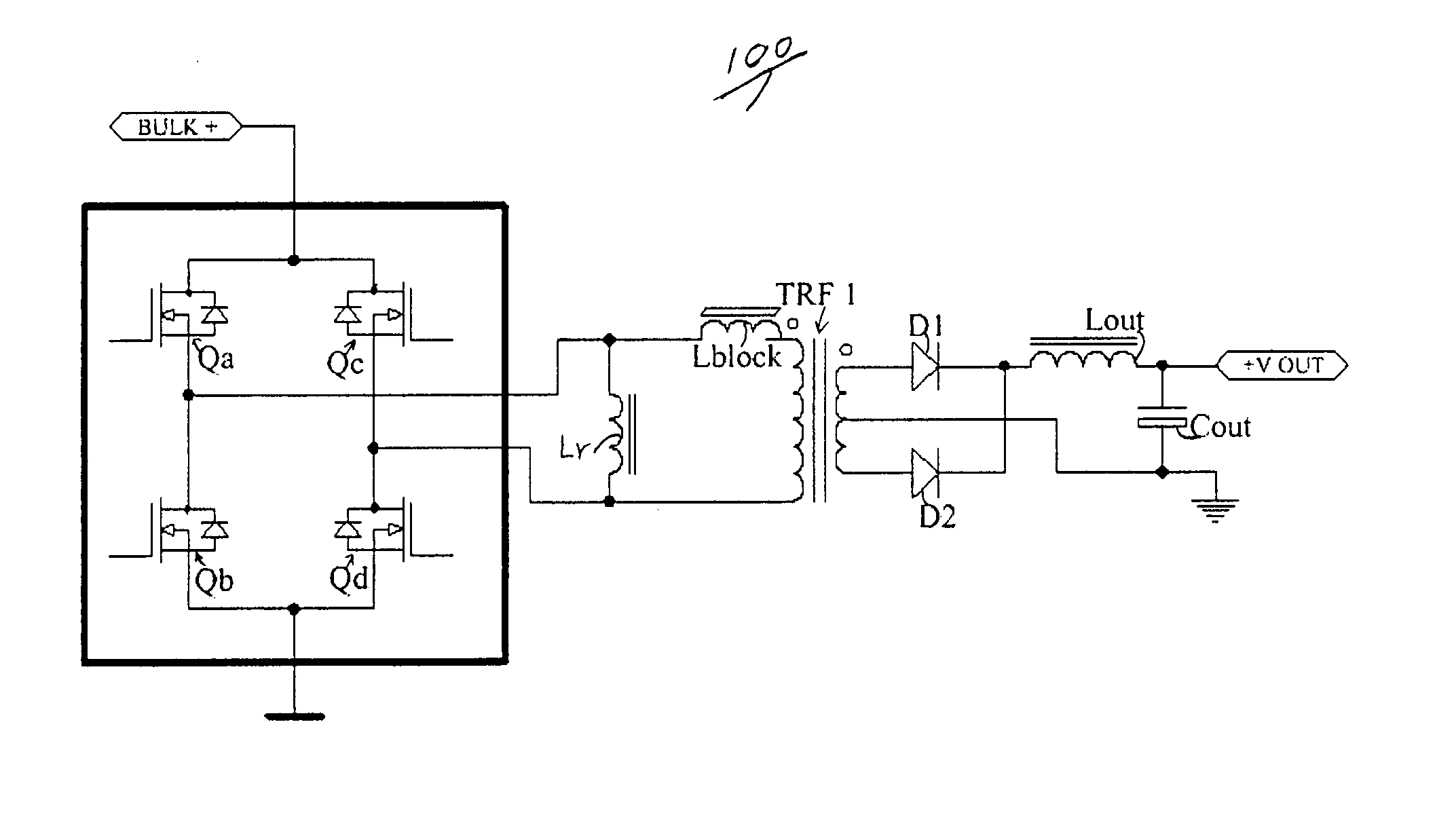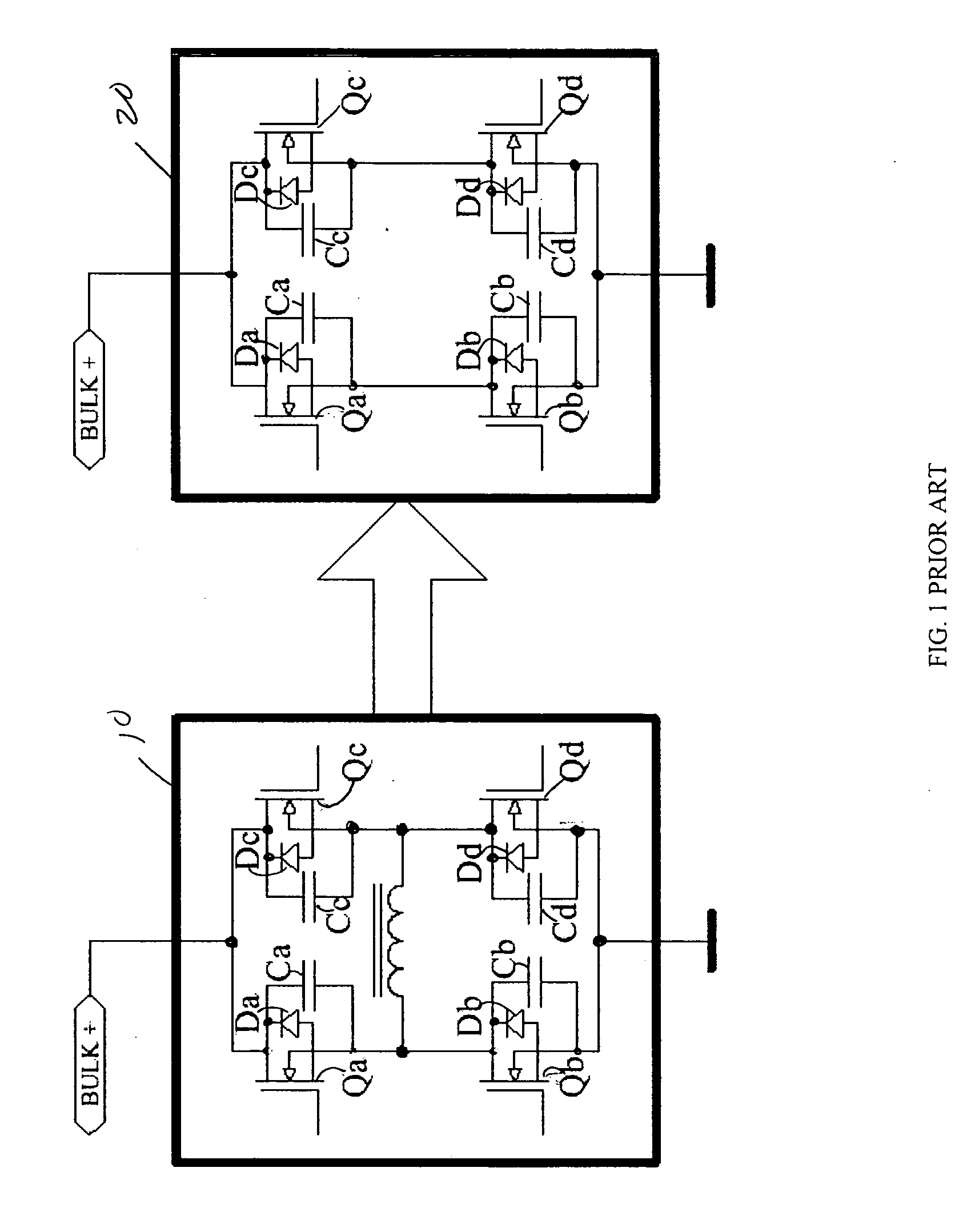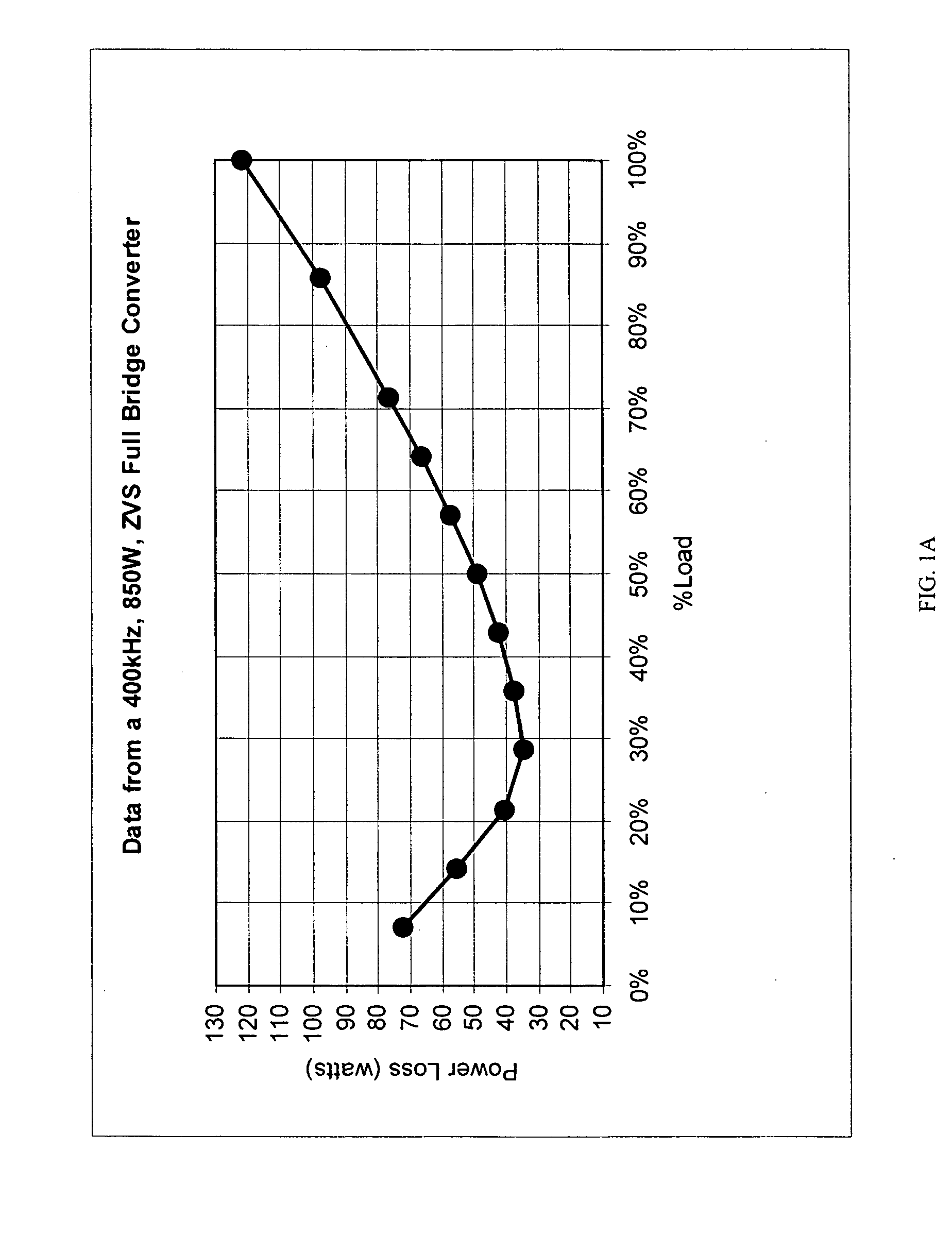Circuit for reducing losses at light load in a soft switching full bridge converter
a converter and full bridge technology, applied in the direction of electric variable regulation, process and machine control, instruments, etc., can solve the problems of increasing unabated, higher switching losses, and worse electromagnetic interference (emi), so as to reduce component cost, reduce power loss, and provide design flexibility
- Summary
- Abstract
- Description
- Claims
- Application Information
AI Technical Summary
Benefits of technology
Problems solved by technology
Method used
Image
Examples
Embodiment Construction
[0046] A preferred embodiment of a circuit according to the present invention is shown at 100 in FIG. 5. Converter 100 includes a resonant inductor Lr and a blocking inductor Lblock as seen in FIG. 5. Resonant inductor Lr is connected across the output terminals of a bridge 110. Inductor Lr is parallel to the series combination of the transformer primary and a blocking inductor Lblock. A simplified representation of switches Qa, Qb, Qc, and Qd is shown in FIGS. 5-8 such that the switch capacitances of the corresponding switches are not shown. The existence of the switch capacitances is well known in the art. For reference, the switch capacitances are as shown in bridge 20 for switches Qa, Qb, Qc, and Qd in FIG. 1.
[0047] In operation, when a bridge diagonal, e.g., Qa, Qd, activates, current builds up through the primary winding after overcoming the blocking period of Lblock. At the same time, current builds up in Lr in the same direction, while storing energy therein. At the end of ...
PUM
 Login to View More
Login to View More Abstract
Description
Claims
Application Information
 Login to View More
Login to View More - R&D
- Intellectual Property
- Life Sciences
- Materials
- Tech Scout
- Unparalleled Data Quality
- Higher Quality Content
- 60% Fewer Hallucinations
Browse by: Latest US Patents, China's latest patents, Technical Efficacy Thesaurus, Application Domain, Technology Topic, Popular Technical Reports.
© 2025 PatSnap. All rights reserved.Legal|Privacy policy|Modern Slavery Act Transparency Statement|Sitemap|About US| Contact US: help@patsnap.com



